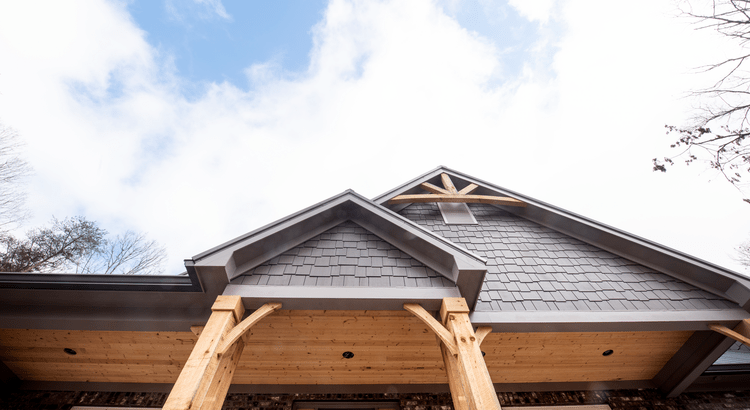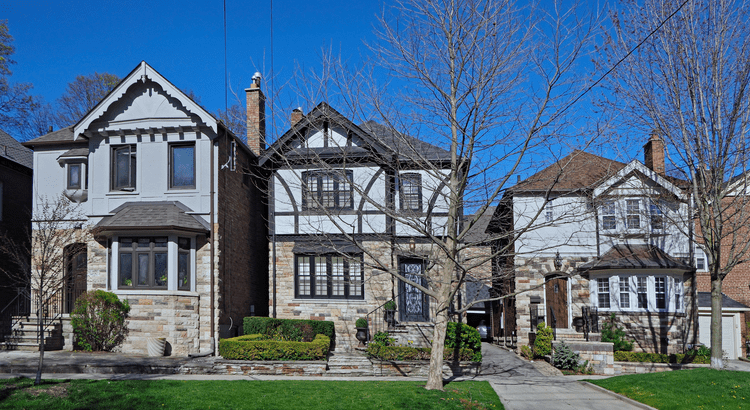The housing market in St. Paul, MN, has seen its fair share of ups and downs over the years. With new construction projects popping up in various areas and an influx of first-time homebuyers entering the market, there are both challenges and opportunities for buyers and sellers alike. Understanding the key factors influencing house prices can help homeowners make informed decisions about buying or selling their properties.
So, what does the future hold for house prices in St. Paul? Will they continue to rise, or are we likely to see another drop? Explore the factors that may impact house prices in the coming year with insights from TheMLSOnline and make informed decisions for your real estate journey.
Possibility of Future Housing Price Drops St. for Paul, MN
Examining the Potential for Housing Price Declines in St. Paul, MN
Now, let’s dive into the possibility of housing prices dropping in St. Paul, MN. It’s important to assess various factors that could contribute to future price drops and understand the current state of the housing market.
One factor that could lead to housing price declines is the overall affordability of homes. As prices continue to rise, it becomes increasingly difficult for first-time buyers to enter the market. Many potential buyers are struggling with high student loan debt and stagnant wages, making it challenging to save up for a down payment or qualify for a mortgage.
Another factor influencing potential price drops is the supply and demand dynamics within the housing market. If there is an oversupply of homes on the market and not enough buyers, sellers may be forced to lower their asking prices in order to attract potential buyers. This can create a downward pressure on home prices.
Economic factors such as job growth and interest rates can impact housing prices. If job opportunities decrease or interest rates rise significantly, it can deter people from purchasing homes or make it more difficult for them to afford mortgage payments. This can result in decreased demand and, subsequently, lower home prices.
Understanding the Current State of the Housing Market
To assess whether housing prices are likely to drop again in St. Paul, MN, it’s crucial to analyze the housing market’s current state.
St. Paul’s real estate market is experiencing strong demand due to low inventory levels and historically low-interest rates. The limited supply and high buyer demand have contributed to rising home prices over recent years.
However, despite these favorable conditions for sellers, some signs indicate a potential slowdown in price growth or a decline in certain areas within St. Paul.
One indicator worth considering is the ratio between listings and pending sales (the number of homes under contract). If the number of listings significantly outweighs pending sales, it suggests a potential oversupply in the market. Buyers may have more negotiating power, and sellers may need to adjust their prices accordingly.
Another factor to monitor is the average days on the market (DOM) for homes in St. Paul. If this number starts to increase, it could indicate that properties are taking longer to sell, potentially leading sellers to reduce their asking prices.
It’s also important to pay attention to any changes in local economic conditions that could impact housing prices. For example, if major employers in the area announce layoffs or if there is a significant downturn in the local economy, it could result in decreased demand and lower home prices.
Trends and Predictions Real Estate Agents Should Know
As a real estate agent, staying ahead of the game is crucial to your success. To help you navigate the ever-changing housing market in St. Paul, MN, for 2023, here are some key trends and predictions you should be aware of:
Highlighting Key Trends Shaping the Housing Market in St. Paul, MN for 2023
- Shift towards Suburban Living: With the ongoing pandemic and remote work becoming more prevalent, a noticeable shift towards suburban living has occurred. Buyers are seeking larger homes with more outdoor space and quieter neighborhoods.
- Rise of Smart Homes: Technology plays a significant role in shaping the housing market. Smart home features such as automated lighting systems, security cameras, and energy-efficient appliances are becoming increasingly desirable among buyers.
- Sustainability and Energy Efficiency: Environmental consciousness is on the rise, and buyers are placing a greater emphasis on sustainability and energy efficiency when searching for their dream home. Features like solar panels, energy-efficient windows, and eco-friendly materials can greatly enhance a property’s appeal.
Providing Predictions on Future Developments that Can Impact Real Estate Agents’ Strategies
- Increasing Demand for affordable housing: The demand for affordable housing is expected to rise in the coming years as younger generations enter the market. Real estate agents who can identify opportunities in this segment can position themselves strategically to cater to this growing demand.
- Continued Low Mortgage Rates: Mortgage rates have remained historically low over the past few years, making homeownership more accessible for many buyers. It is predicted that these low rates will continue into 2023, further fueling demand in the housing market.
- Urban Revitalization Projects: St. Paul has seen several revitalization projects to enhance urban areas with new amenities and infrastructure improvements. These projects can significantly impact property values and buyer preferences, making it essential for real estate agents to stay informed about these developments.
Insights into Buyer Preferences and Demands Driving Market Dynamics
- Emphasis on Outdoor Spaces: The pandemic has highlighted the importance of outdoor spaces for buyers. Properties with well-designed outdoor areas, such as patios, gardens, or balconies, are highly sought after. Real estate agents should highlight these features to attract potential buyers when marketing properties.
- Home Offices and Flexible Spaces: Remote work arrangements have become the new norm for many individuals. As a result, home offices and flexible spaces that can be easily converted into workspaces have become increasingly important to buyers.
- Proximity to Amenities: Buyers are placing a premium on convenience and proximity to amenities such as grocery stores, restaurants, parks, and recreational facilities. Properties located near these amenities attract more interest from potential buyers.
Impact of Rising Interest Rates on Home Prices in St. Paul, MN
Rising interest rates can significantly impact the housing market and home prices in St. Paul, MN. Let’s explore how these elevated mortgage rates can affect the affordability of homes and the overall demand in the area.
Affordability Concerns for Homebuyers
When mortgage rates are high, it becomes more expensive for potential buyers to finance their home purchases. As interest rates rise, monthly mortgage payments also increase, making it harder for buyers to afford homes at higher price points. This decrease in affordability can lead to a slowdown in demand and potentially lower home prices.
Potential Decrease in Demand
High mortgage rates can deter potential homebuyers from entering the market altogether. When borrowing costs become too steep, many individuals may choose to delay their plans of purchasing a home or opt for more affordable alternatives such as renting. As a result, there could be a decrease in demand for houses, which can put downward pressure on prices.
Strategies for Real Estate Agents
Real estate agents need to be prepared to navigate this scenario effectively. Here are some strategies they can employ:
- Educate Buyers: Agents should educate buyers about the potential impact of rising interest rates on their affordability and encourage them to consider locking in lower mortgage rates before they increase further.
- Focus on First-Time Homebuyers: First-time homebuyers are often more sensitive to changes in interest rates due to limited resources and tighter budgets. Real estate agents should tailor their marketing efforts towards this demographic by highlighting affordable options and available financing programs.
- Emphasize Long-Term Value: While rising interest rates may temporarily dampen demand and slow down price growth, real estate agents can emphasize the long-term value of homeownership as an investment that historically appreciates over time.
- Monitor Market Trends: It is crucial for real estate agents to stay informed about the latest market trends and interest rate movements. By closely monitoring the market, they can adapt their strategies accordingly and provide valuable insights to their clients.
Identifying High-Risk Markets
In the ever-changing world of real estate, agents must stay ahead of the game and identify potential high-risk markets where price declines are likely to occur. Agents can make informed decisions by understanding the factors that contribute to these risks and conducting thorough research. Paul, MN.
Are House Prices Likely to Drop Again? Identifying Specific Neighborhoods with Higher Risk of Declines
In St. Paul, MN, it’s essential for real estate agents to dig deeper into specific neighborhoods or areas within the city to answer the question, “Are house prices likely to drop again?” Not all areas are created equal, and certain factors may make some neighborhoods more susceptible to price declines than others.
Some key indicators that can help identify these high-risk areas include:
- Historical sales data: Examining historical sales data can provide valuable insights into market trends and identify any patterns of declining prices in specific neighborhoods.
- Economic conditions: Monitoring the overall economic conditions of a neighborhood is crucial. Job growth, unemployment rates, and income levels can greatly impact housing demand and ultimately influence prices.
- Inventory levels: Keeping an eye on inventory levels is vital when assessing the risk of price declines. An oversupply of homes can lead to increased competition among sellers, potentially driving prices down.
- School districts: The quality of school districts within a neighborhood often plays a significant role in determining property values. Areas with poorly rated schools may experience lower demand and face price declines.
Factors Contributing to High-Risk Real Estate Markets Within St. Paul, MN
Several factors contribute to high-risk markets within St. Paul, MN. Understanding these factors can help real estate agents navigate potential pitfalls and avoid investment or listing decisions that could lead to financial losses.
Some key factors contributing to high-risk markets include:
- Economic instability: Economic downturns or recessions can significantly impact the housing market. When the economy falters, people may struggle to afford homes, leading to decreased demand and subsequent price declines.
- Overdevelopment: Rapid and excessive development can saturate the market with an oversupply of properties. This excess supply can create downward pressure on prices, making it a high-risk market for real estate agents.
- Changing demographics: Shifting demographics within a neighborhood can also contribute to high-risk markets. For example, if an area experiences an exodus of younger families and an influx of retirees, this could lead to a decline in demand for larger-family homes.
- Infrastructure changes: Changes in infrastructure, such as the construction of highways or commercial developments nearby, can impact property values. If these changes negatively affect the desirability of a neighborhood, prices may decline.
The Importance of Conducting Thorough Research Before Investing or Listing Properties
Before making any investment or listing decisions in St. Paul, MN, real estate agents must prioritize conducting thorough research. The importance of this step cannot be overstated.
By conducting comprehensive research, agents can:
- Identify trends: Research allows agents to identify trends in specific neighborhoods or areas indicating potential price declines. This information helps them make informed decisions based on data rather than speculation.
- Evaluate risks: Thorough research enables agents to evaluate the risks associated with investing or listing properties in certain markets. By understanding these risks upfront, they can weigh them against potential rewards and make calculated decisions.
- Provide accurate advice: Armed with extensive knowledge gained through research, real estate agents are better equipped to provide their clients with accurate advice regarding buying or selling decisions.
Understanding the Likelihood of Dropping House Prices in St. Paul, MN
Now that we have explored various aspects related to the likelihood of dropping house prices in St. Paul, MN, it’s clear that there are several factors at play. While it is impossible to predict the future with absolute certainty, analyzing trends and market indicators can provide valuable insights for homebuyers and real estate professionals like yourself.
Rising interest rates can impact housing prices, and identifying high-risk markets is crucial for making informed decisions. It’s important to stay updated on current market conditions and consult with experienced real estate agents with local expertise. By doing so, you’ll be better equipped to navigate the ever-changing landscape of the housing market in St. Paul.
Understanding the likelihood of dropping house prices requires a proactive approach and a deep understanding of market dynamics. Stay informed, seek professional advice, and monitor key indicators to make confident decisions. Explore listings and market data on TheMLSOnline for comprehensive insights into St. Paul’s real estate market.








